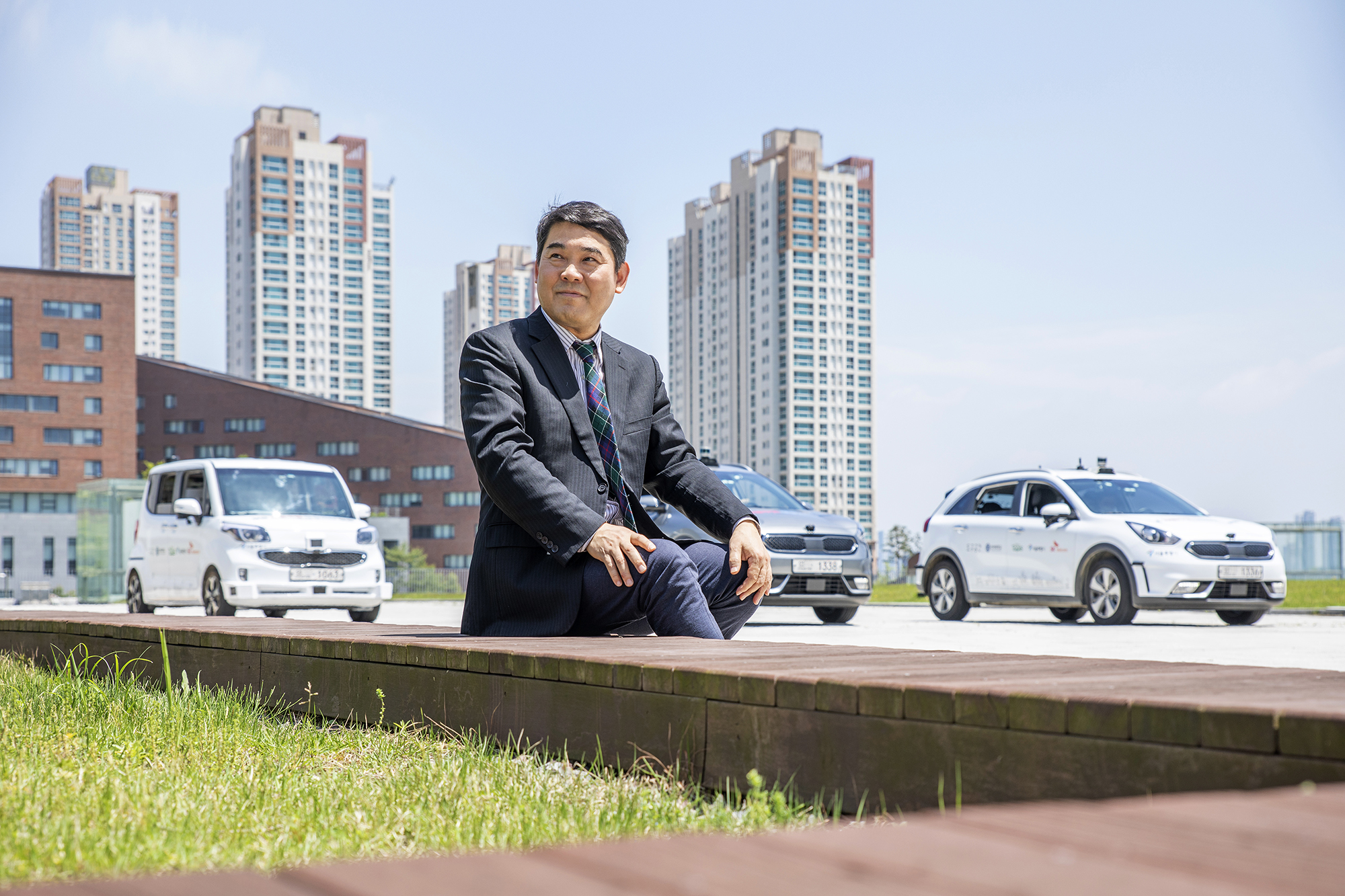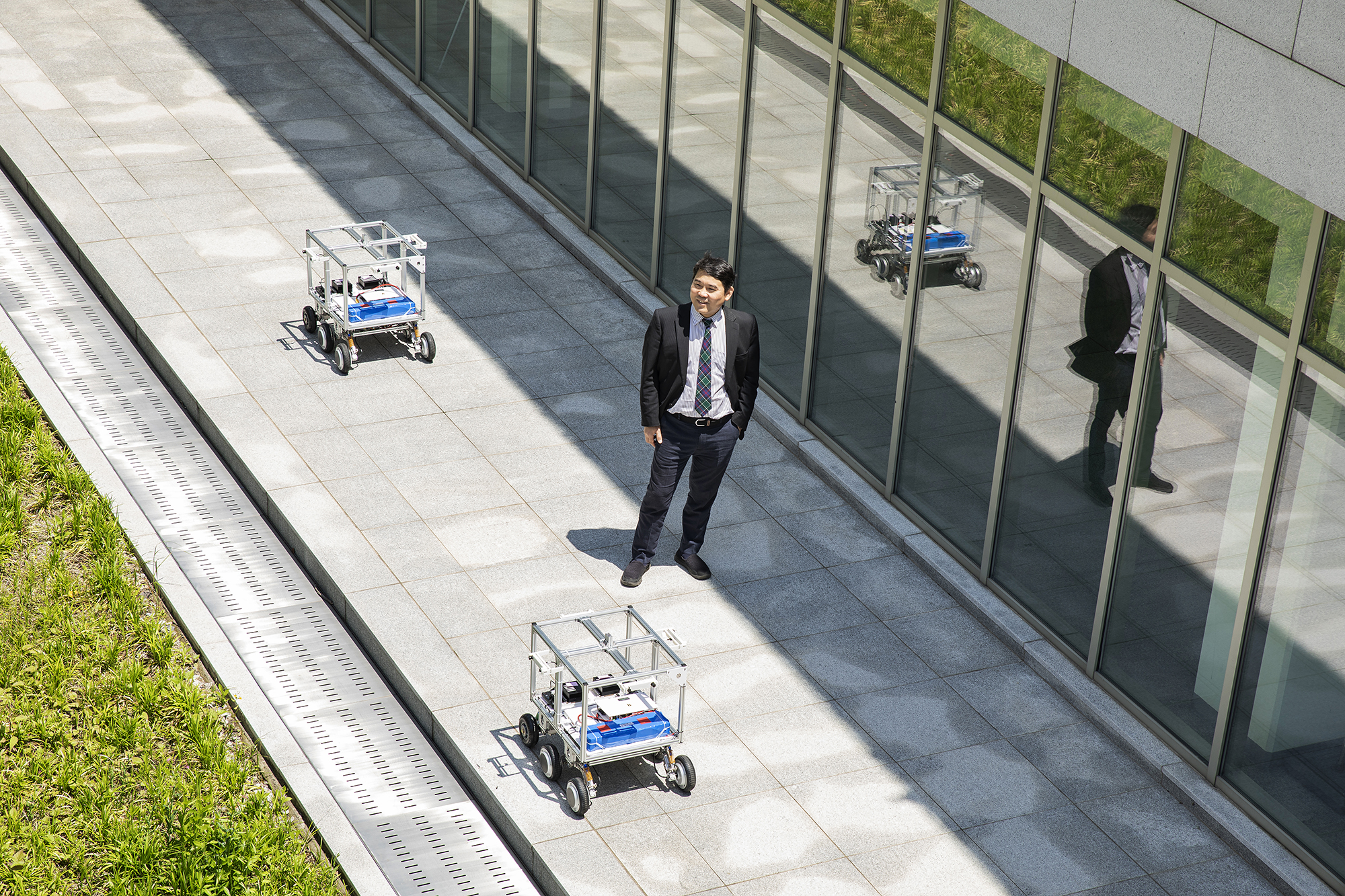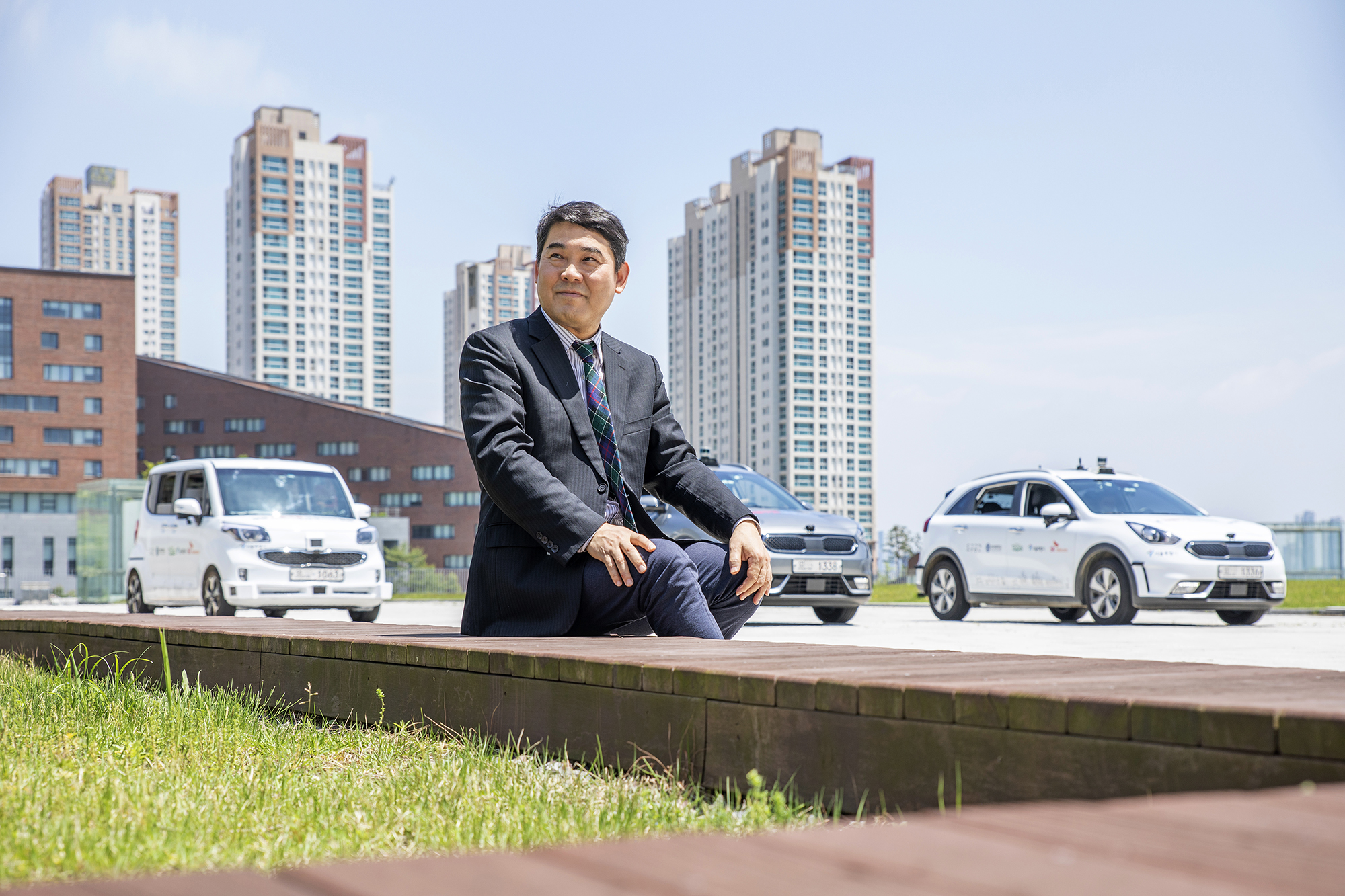- Present and Future of Autonomous Driving May 28, 2021
-
by Professor Shiho Kim, School of Integrated Technology

An autonomous vehicle, also known as a self-driving car, can be defined as a vehicle that can drive itself without human manipulation. To construct an autonomous vehicle, the vehicle must be equipped with a high-level information processing and artificial intelligence (AI) system for the vehicle to process the recognition, judgment, and control necessary for driving in real time. The level of automation technology of automobiles is classified into six stages from level 0 to 5, and it is classified as autonomous vehicles from level 3, the conditional automation stage. Fully autonomous driving, which can operate in all conditions without human intervention, falls under level 5.
The technology level of Tesla's latest model, which has the most advanced autonomous driving performance among commercialized cars today, is level 2. As of May 2021, there is no automaker that mass-produces and sells level 3 or higher autonomous vehicles to general consumers. If you are expecting the self-driving car "KITT" that appeared in the popular TV series in the 80's Knight Rider, the level 5 self-driving car that operates by itself while communicating with the owner like a human will have to wait at least 10 years for research results to be put into practical use.
The Mobility Revolution of Autonomous Driving Changes the Future Society's Lifestyle
Currently, the only means of transportation is to either own a private car and drive it on our own, or to use public transportation services, such as buses, metros, and taxis. Autonomous driving technology will transform the current mobility system, which relies solely on private cars or public transportation, into a Mobility-as-a-Service (MaaS) method. MaaS provides a function that allows individuals to conveniently call and use a self-driving car to the required place, thereby eliminating the need to own a private vehicle. Ultimately, the current mobility system, which is divided into private vehicle use and public transportation, becomes autonomous driving. It is expected to be reorganized into taxis, autonomous shuttles, shared autonomous vehicles, and public transportation services. Furthermore, freedom of movement will be guaranteed for elderly, handicapped, and children who have difficulty driving. Autonomous driving will bring a digital revolution not only in the automotive industry ecosystem, but also in the transportation sector, transforming the way urban people live.
Autonomous driving will also expand freedom of movement while freeing individuals from drivers' vehicle maintenance obligations (e.g. taxes, insurance, vehicle maintenance and management, etc.). According to the Boston2030 report of the Boston Consulting Group (BCG), unnecessary vehicle traffic in the city can be reduced by 30% and parking spaces in the city center can be reduced by 50% as a result of simulating the full-scale introduction of autonomous vehicles in Boston. It is predicted that the average vehicle speed will be improved by 30% and environmental problems caused by exhaust gas will be greatly improved. The reason why autonomous driving technology is attracting attention is because it is expected to provide many benefits to the public as well as individuals, and to revolutionize the lifestyles of citizens.

Post Smartphone Eco-System: A Future Industry Created by Autonomous Driving
The revolutionary change in mobility brought about by autonomous driving will not only change individual lives, but will also become the core of the industrial ecosystem in the era of the Fourth Industrial Revolution. Currently, ICT services leading the digital technology revolution are based on smartphone platforms. Various ICT services, such as searching, shopping, map, content provision, social media, and Fintech of global companies (e.g. Apple, Google, Amazon, Kakao, NAVER, etc.) are built based on networks that connect with consumers through cloud and smartphone platforms.
Most of the existing online services collect content and provide services through the smartphone ecosystem. If one thinks about the future in which autonomous vehicles equipped with AI, robots, and personal air vehicles (PAVs) are put to practical use, it is easy to imagine that autonomous driving technology will create a new platform. Some 22 million vehicles are currently registered in South Korea. In most developed countries, the penetration rate is about one vehicle per two people. The number of automobiles is not small compared to the proportion of mobile phones, and autonomous vehicles connected with AI and high-speed wireless communication will provide a new ICT platform. It is expected that the ICT industry after the smartphone will evolve based on the autonomous driving platform.
The companies that are currently leading the technological innovation of autonomous vehicles are startups, such as Tesla, and global ICT companies like Google (Waymo) rather than traditional carmakers. The reason why Google invests in the development of autonomous driving technology and Apple is promoting the development of Apple Cars is because the digital industrial ecosystem after smartphones will evolve around the autonomous vehicle platform.
The recognition, judgment, and control technologies developed in autonomous vehicles can be applied to food or delivery robots. Self-driving delivery robots that move at a lower speed than cars and do not require consideration for the safety of occupants are expected to be put to practical use before self-driving cars. Research to apply autonomous driving technology to Urban Aerial Mobility (UAM) is also being actively conducted, and commercial service of autonomous driving PAVs is expected to become possible within a few years.
Yonsei University's Seamless Transportation Lab (STL) established an autonomous driving PAV research center based on research performance and experience in autonomous vehicles to research UAM technology for autonomous vehicle transportation and autonomous driving mobility. The STL has been conducting research on self-driving cars since 10 years ago and obtained temporary driving licenses for three autonomous vehicles from the government (the Ministry of Land, Infrastructure and Transport). It also successfully demonstrated on-demand mobility services at testbeds in Sangam-dong, Seoul.

Core Technology for Autonomous Driving: Human-Level AI
The most difficult problem in putting self-driving cars into practical use is that the car's AI technology has not yet reached the level of human drivers. Human drivers can actively cope while driving even in situations they have never experienced before, learn on their own while driving and gain experience while driving, and have the ability to adapt to changes in the environment. Currently, machines' AI has the cognitive judgment ability only with respect to the data and settings shown at the time of learning, and does not yet have the ability to learn on its own like humans. It also does not have the ability to actively cope with environments that have not been experienced before.
Moreover, most of the current AI services are processed on desktop computers or cloud server systems with very large computational power, but automobiles must be equipped with embedded computers with limited computational power and power consumption as embedded systems. In other words, although processing such as AI recognition is possible with algorithms, it is necessary to further develop low-power intelligent semiconductors to enable real-time processing with a built-in computer with limited performance mounted on a vehicle. AI research for the realization of fully autonomous driving in the next 10 years will be concentrated on overcoming the limitations of these AI computers, semiconductors performance, and power consumption.
The biggest problem that South Korean researchers face in autonomous driving research is that autonomous driving is a multidisciplinary problem of the entire engineering field, such as machinery, automobiles, computers, AI, and electrical and electronics, and requires an integrated approach. Researchers who specialize in only one particular field of study are very unfamiliar and burdened with the multidisciplinary and integrated approach. For example, computer engineers consider a single operating system and a single software system configuration of a system that they take for granted as a taboo in the automotive field, where safety is a priority, and similar differences between disciplines and specializations in AI technology occur in several fields. It is impossible to develop an autonomous vehicle by simply combining technologies from several fields. An integrated thinking and approach is essential to achieve a common development goal while maintaining the characteristics of different fields.
Automobile technology will develop steadily with the goal of commercialization of fully autonomous vehicles over the next 10 years. Autonomous driving AI technology will also be applied to autonomous delivery robots for transporting cargo and come closer to our daily lives. In addition, autonomous driving urban air mobility technology is expected to be put to practical use within 5 years after trial implementation, and popularized in 10 years. It would be no exaggeration to say that the competitiveness of the future ICT industry in the midst of the ongoing Fourth Industrial Revolution depends on whether or not it has secured the core technologies for autonomous driving.
show mobile menu
mobile menu




